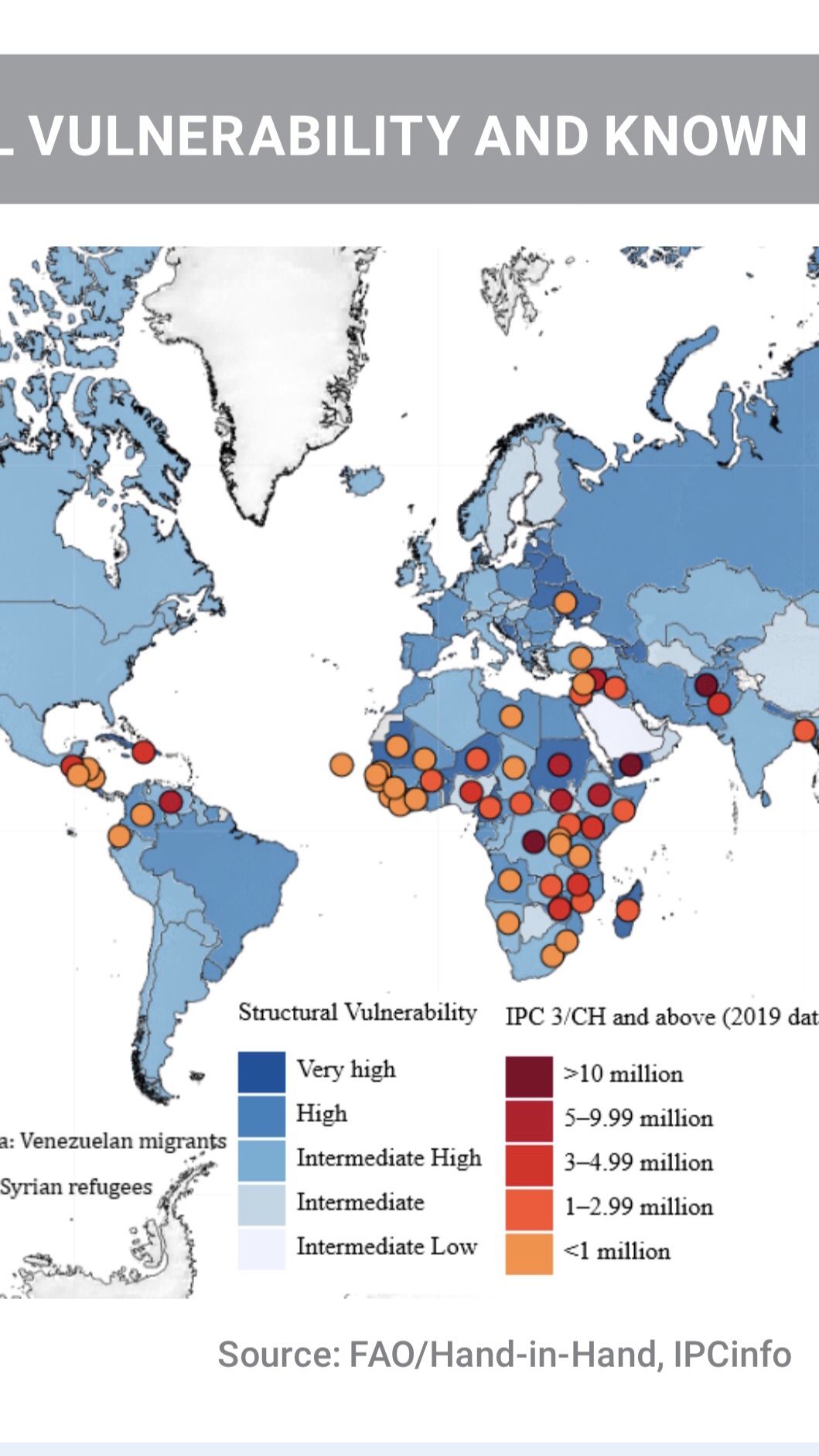One of Science Magazine’s Breakthroughs of 2019 was how to treat malnourished children.
Millions of Children who were malnourished remained sick, even after being well fed.
Over a decade, researchers found that their gut microbiomes were not developing to digest food.
They found that supplements containing chickpeas, bananas, soy and peanut flour helped the microbes mature.
This would allow them to digest milk powder and rice, the standard forms of aid.
They recovered at home, not needing hospitalization.
Worldwide Hunger
Previously, 135 million were suffering acute hunger.
This was due to conflicts, climate change, and economic crises.
New numbers are now 265 million.
The UN World Food Program is trying to raise $6.7 billion in aid.
Remember, worldwide plagues can arise from the poor and malnourished.
President Trump singly withdrew the US from the World Health Organization, depriving it of $550 million a year, as the principal contributor. It directed vaccination for children worldwide, for diseases which we have eliminated.
In America, 17% of young children are not getting enough to eat.
734 million people worldwide were already in extreme poverty, meaning that they earn less than $2 per day.
Now, 420 million have been added to that.
That is 13% of the world’s people.
Since 1990, one billion people had risen out of poverty.
Sub-Saharan Africa, the Middle East, and Southeast Asia is where it is most crucial.
UN Report on World Hunger in the Pandemic, released June 9, 2020.
One fifth of children worldwide have stunted growth by age 5.
The food system is under extra threats by the pandemic, the lockdown interfering with harvesting, buying and selling food, and the economic recession.
Unemployment and loss of income is causing malnourishment, while food prices increase.
368 million students are missing out on school meals, while we are working to make them up for US students.
East Africa is under attack by swarms of locusts.
1.3 billion people are in food system industries.
The livelihoods of 3.2 billion people depend on the food industries.
With the Pandemic, 35% of both sectors are at risk.
That is 450 million with jobs, and 1.1 billion with livelihoods dependent on the food system.
Vulnerable Areas in the World
In Latin America and the Caribbean, one third are in precarious positions.
Dark red dots are greater than 10 million people
Dark blue are countries with Very High vulnerability.
Latin America has gangs in Central America, and there are migrants from Venezuela.

